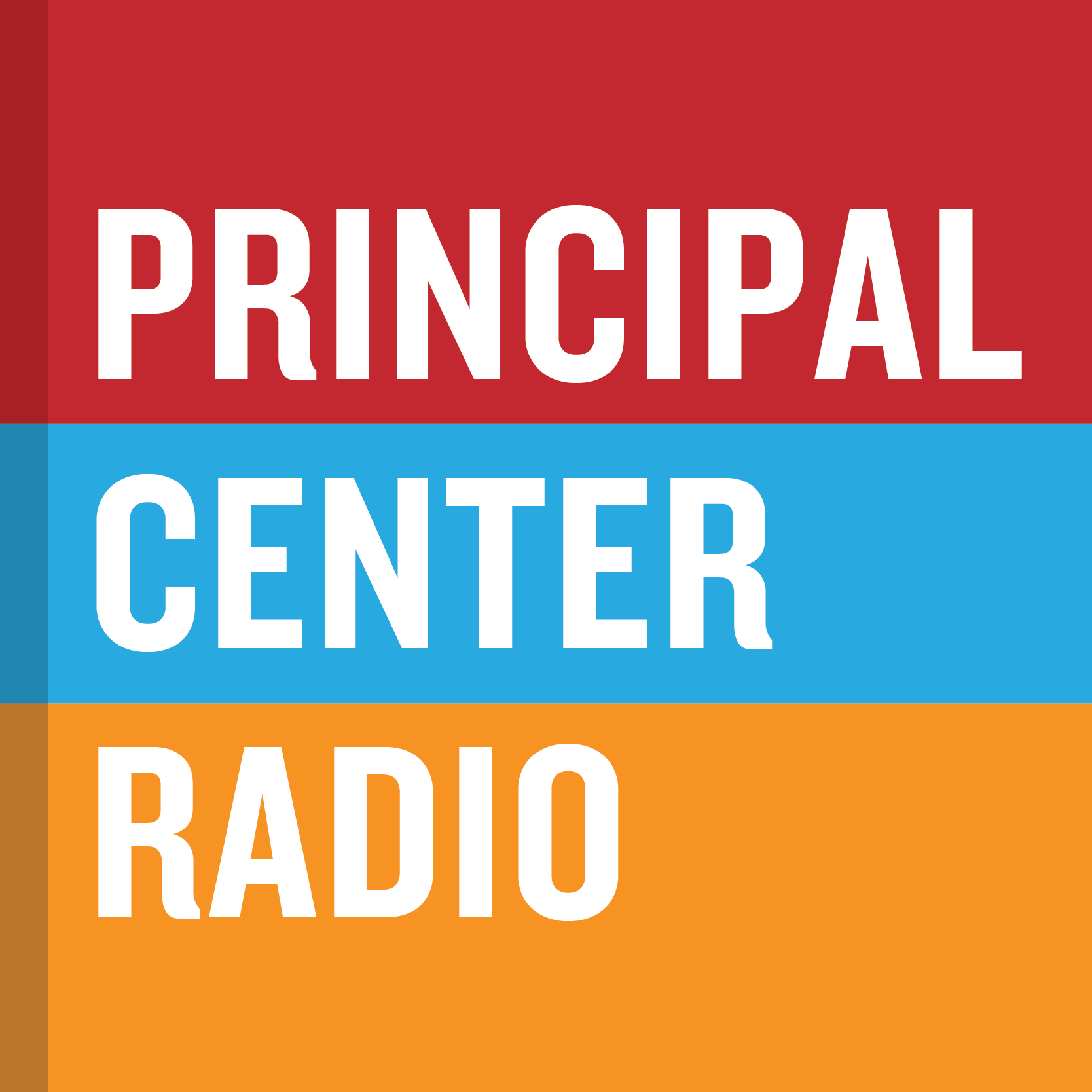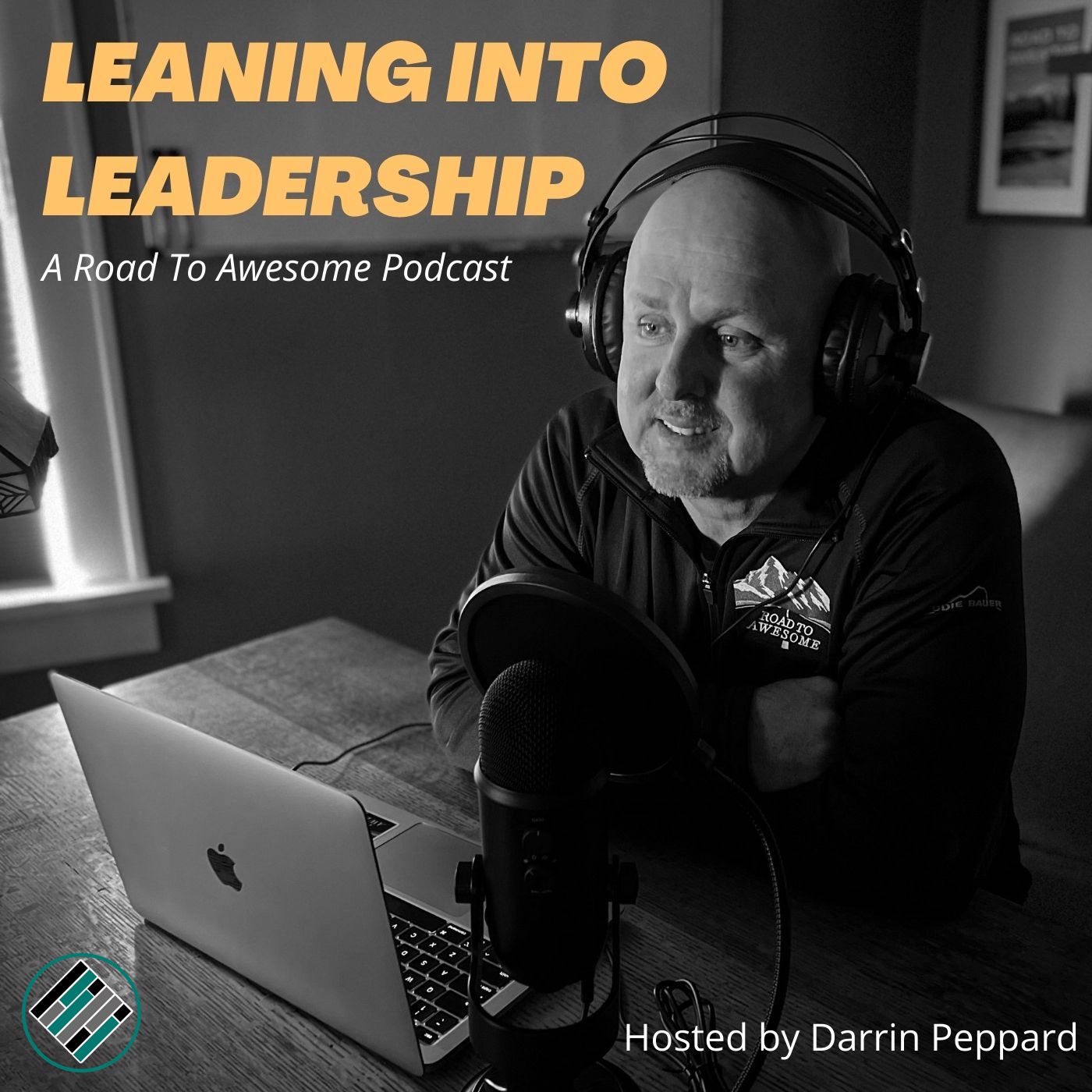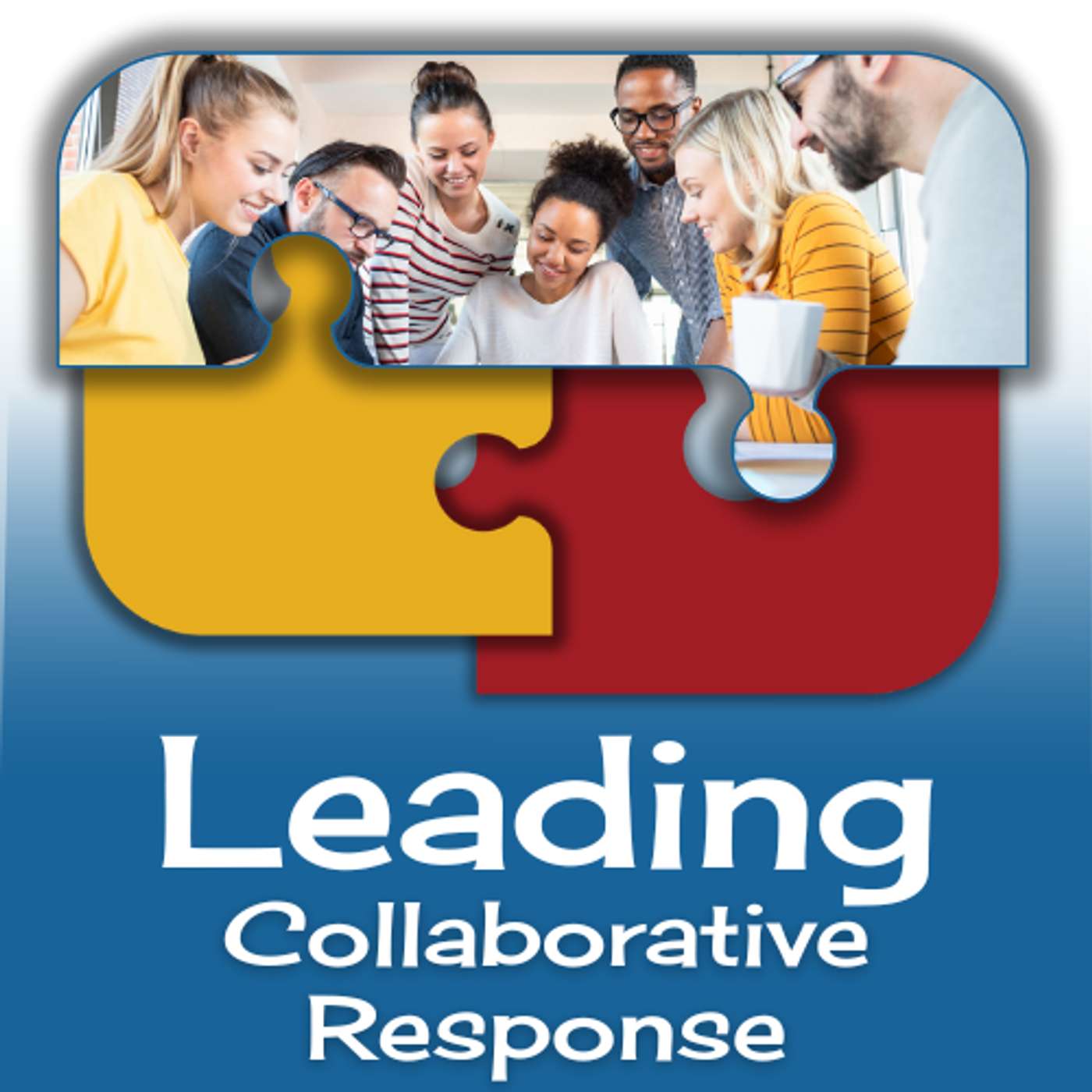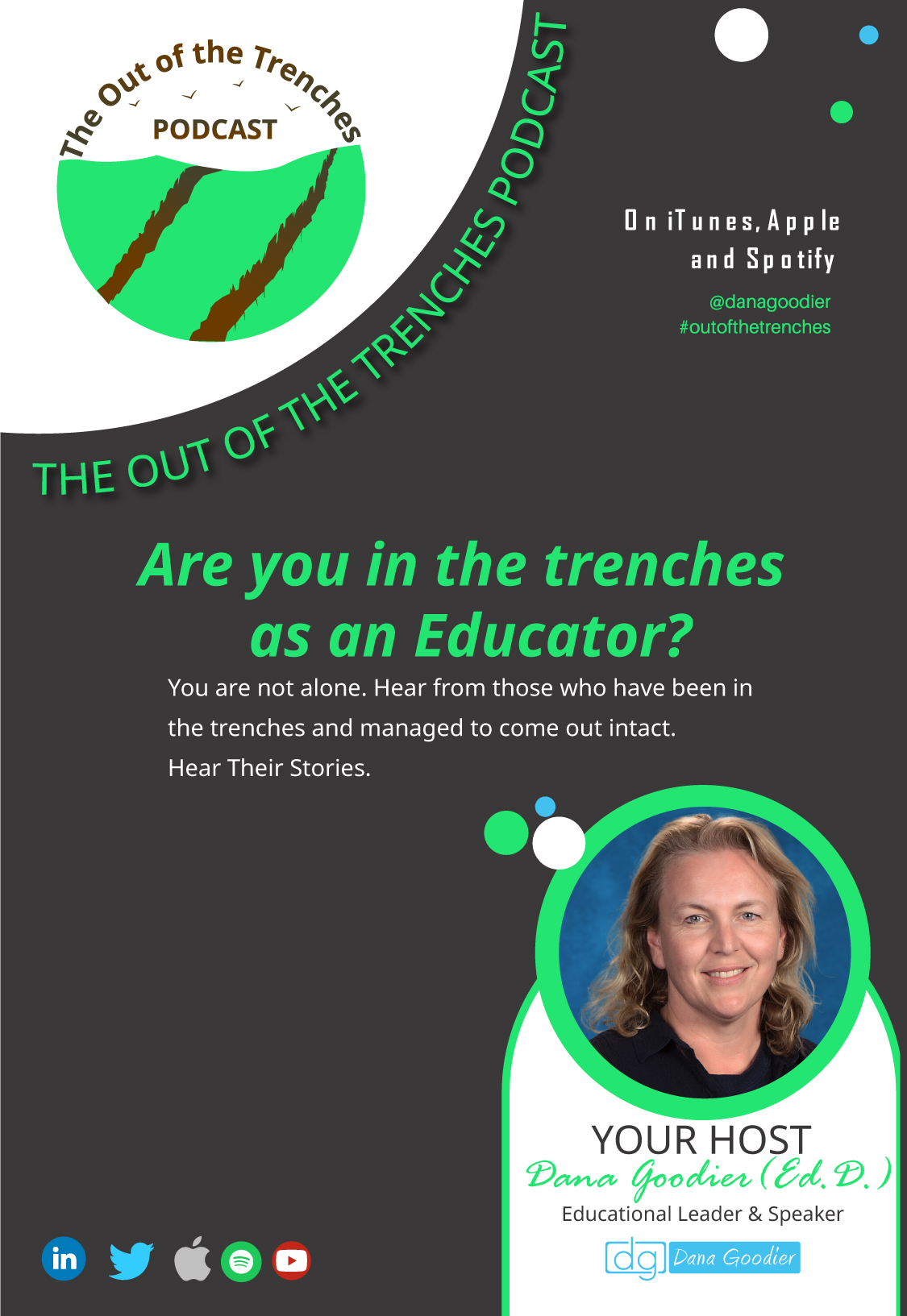
Educational Leadership with Principal JL
Principal JL is an educational leader who explores various topics facing educational leaders today! The Mission of this podcast is to inform and inspire other Educational Leaders on how to be their best for their Schools by honing their skills and talents so they may impact their teachers, staff members, students, parents/guardians, and community members positively for their School District! Come with a Growth Mindset as we journey through Educational Leadership!
Educational Leadership with Principal JL
Episode 25: From Stranger to Team Captain — A First-Year Principal’s Culture-Building Playbook!
What happens when a school truly embraces "we're all on the same team" as more than just a catchy phrase? The transformation can be remarkable.
At Hastings High School, my journey as principal began with a fundamental belief that everyone—from teachers to custodians to students—plays an essential role in our school community. This wasn't just wishful thinking; it was an intentional approach to building a culture where trust, collaboration, and shared purpose could flourish.
My 60-90-30 transition plan became the roadmap for putting this belief into action. Those first 60 days were devoted entirely to relationships: conducting one-on-one conversations with every single staff member (all 120 of them!), learning existing systems, and becoming a visible, approachable leader. Rather than bulldozing in with changes, I listened and learned what was already working well. The following 90 days allowed us to celebrate successes while collaboratively analyzing challenges around issues like cell phone usage and attendance. By the final 30 days, we were implementing solutions that everyone had helped develop.
This methodical approach has yielded powerful results three years later. Delegation happens naturally because trust flows in all directions. Problem-solving becomes more efficient as we tap our collective wisdom rather than working in isolation. Staff members feel genuinely valued when they see their input translated into meaningful action, and our students benefit from witnessing adults who model true collaboration.
The foundation of intentional belief building creates a self-reinforcing cycle: when people feel they're truly on the same team, they behave accordingly. What belief might transform your school if you led with similar intention? Share your thoughts and experiences—I'd love to hear how you're building your own culture of belonging and teamwork.
60-90-30 Day Transition Plan PDF
Episode 18: Transforming School Leaders: Insights from Angela Kelly's Leadership Journey!
Teach Better Mid Roll Network Ad
Connect with Principal JL Click Here:
Want to be a guest on Educational Leadership with Principal JL?
Send Principal JL a message on PodMatch, here: https://www.podmatch.com/hostdetailpreview/1742787866678447e5bdb89c1
Welcome back everybody to another episode of the Educational Leadership with Principal JL. In this episode, we're going to talk about intentional belief building. This is something I learned through working with Coach Angela Kelly and if you haven't got to hear that episode that I did with Coach Angela Kelly, I would like you to go back to episode 18 and listen to her educational journey. It's really powerful and she does a really nice job coaching up principals. But this is something that she helped me work through a process that I did within my first year as being the principal here at Hastings High School.
Principal JL:In my first year Now, before I even became the principal at Hastings High, I developed a transition plan. I called it the 60-90-30 transition plan, and I may have talked about it being a 30-60-90 transition plan, but at the same time, that's because I went back to my math roots thinking about 30-60-90 triangles, and so I want to set the record straight. My transition plan that I've used is actually a 60, 90, 30 day transition plan, which I will get into here in a little bit in this episode. So when we're going to talk about is intentional belief building, and what I had to come up with is what that I believe that I wanted for our building as a whole, and the one belief that kept sticking out on me is that we are on the same team. This is just not a feel-good phrase. This is a guiding principle of mindset that has powerful transformation on how we lead, how we connect with our staff and, ultimately, how we serve our students. So I have this big idea that I want everybody to understand we are on the same team. It's a powerful foundation for school culture, one that embraces community trust, safety, collaboration and value.
Principal JL:In this belief, no one is more important than the other. We all matter, we're all in it together, whether we agree, whether we disagree. We lead, we follow, we teach or support. Everybody has a place and purpose and we're all in it together. That's what it means to be, for us to be on the same team. We all have a role, we all have a purpose and we have something to contribute to the greater good of our community, which, in this case, is our school building.
Principal JL:There are some things that I figured out, that were already true, that were showing up, that shows that, hey, we can be on the same team Really to understand this belief. You know what is already true within the school. When I was there in the first year and this is something that we've built upon over the last couple of years as well is I realized that our teachers and staff have built a welcoming spaces in their departments. Okay, now, we had some departments that were really good at it, we had some departments that weren't, but the goal is is we understand there's the ability that we have a warm and welcoming spaces in our school. Sometimes there's disagreements and uncertainty, the team sticks together. So that was always a good thing to see is, hey, you know, we're going to stick together no matter what the situation.
Principal JL:There is a deep desire for leadership, in this case, that listens, supports and shows up, and not just with words but with action. So on my part, when I came in is, I had to understand that they needed somebody that would lead, that would do what they say and say what they do, and that was something I worked really hard on because I wanted them to build trust and to the administration team and to the leadership that was at the end of building. Some things we already knew is true is they did, they can, develop those warm, welcoming places in the in the school. The goal was is try to get that spread out through the whole entire school and I'll talk more about that within my transition plan. There's a sense of community within our school. It's not 100% all the way across the board at this time, but it was something that I knew was there and I knew it was something that we come as we can create this sense of community. Some departments or groups were thriving in this culture, some weren't, and so really, if we wanted to shift the climate of the entire building, everybody had to be on board, and that was the goal within that first year and some I continue to work on is getting everybody on board and on the same page and understanding the goals and expectations and where we were going with that. Now we know there has been mistrust in the past, but one of the reasons why I came in was to help rebuild that, to bring unity and trust within the building, and that is something I want to work really hard on was to build that sense of community, that belonging.
Principal JL:No matter what you were If you're a teacher, a staff member, a student you felt welcomed and invited into the school environment. And then how did I do that? Some of the things I worked on was being visible. You know, not being in my office Now there's times I have to go in there and do the things I need to do but I wanted to be more visible, get out and talk to people. I wanted to lead through relationships. I wanted to build those relationships and I'll talk more about how I did that and then manage the school by walking around. I wanted to walk around and be able to see what people are doing, check in with them and get to know people through those walks. And then I needed to listen and not just say I'm listening, but actually listen and then take what they have talked to me and use that, what they have talked to me and use that. And so you know some of the things that I did when I first started as a new principal, and that was to be a really key.
Principal JL:If you're going to be a new principal next year, this might be something you want to think about is to build a 60, 90, 30 transition plan. Now you're going to have to understand your school a little bit. What do they have? What systems do they have in place to build around that? And so I'm actually, in this episode, going to share my 60, 90, 30 transition plan with you in the show notes so you can see what my goals were and what I was trying to do. Let's get into the 60, 90, 30 transition plan.
Principal JL:With my 60, 90, 30 transition plan, I first thing I did is I set goals for the year. So these are things that I wanted to do within that first year of being a building principal, and this is something you guys can take this and steal it all you want, but this is something I believe in to, where we aren't going to move the needle on test scores and academics unless our building, our culture and climate is solid. So my first year I really wanted to build the relationships in the school culture. So how did I do that? Here's my goal. So one I wanted to build and maintain a positive relationship with all like I wanted to understand everybody, what they do, you know, and what their role is within the school. Then I wanted to maintain, improve building culture and climate. I wanted to ensure the district's instructional model is being implemented, with evidence-based strategies in the classroom instruction, and then be visible and approachable. That's all my goals were in the first year. Now what I did is I chunked that out into a 60-day goal, 90-day goals and 30-day goals. This is what I did in my first 60 days as a new principal here at Hastings High School.
Principal JL:The first thing I wanted to do is gain a clear understanding of the superintendent's expectation. That was really important to know. Hey, what did you expect, what do you need me to do? And we had those candid conversations and they said this is, you know, kind of where the school is at and this is where I like to see it go. And so I wanted to make sure we were on the same page of that. And that was where we go. Yeah, that would be the direction we need to go. We need to make it a warm and welcoming environment school. We want kids to come, we want staff and students to feel you know good about being at our school, and so that's what I wanted to work on. And then I wanted to. You know, the next thing in this first 60 days is I will do in-depth listening and learning of the Tiger Way, the Tiger Pride, which is our PBIS program that we do and system that we have in place. To where? What does pride mean? Where does this mean in all the different common areas of the building? What does that look like and how can I support it? So I really wanted to dive in and understand this system that they've already put in place and really try to help support that, understand this system that they've already put in place and really try to help support that.
Principal JL:And then I wanted to go around to my staff and I wanted to do one-on-one meetings with each teacher and staff member. I didn't care if you were a teacher, a para, if you were a custodian, if you were a administrative assistant. My goal in my first 60 days was to have a conversation with every staff member, one-on-one, and with that. That was how I built the relationships up so I can get to know them. And so I tried to make it about a five-minute conversation when I would go and seek out these people. I actually had a list, I checked off their names and I actually went and made it intentional time to meet with those people and have those conversations. I checked off their names and actually went and made it intentional time to meet with those people and have those conversations. I wanted to be more casual. I didn't want it to be like hey, come to my office. I went to either their classroom or where they were at during their planning or wherever um they were um having you know their break, and I would go in and talk to them and see how they're doing and you know, get to know them not just on a professional level but get to know something personal about them, to where you know I could build that relationship up and that was really important for me to do within that first 60 days and to get through everybody. And that was a lot of people I had to get through. I think, if I remember right, it's about 120 people within the first 60 days. I wanted to have those one-on-one conversations with.
Principal JL:As I'm doing these one-on-one meetings, I was also starting to develop positive relationships with my administration team, my teachers, my staff, everybody, school board members, community members. I try to talk to those people, get to know them and they get to know me and so we could really get on the same page and the same footing. And it's just more of that relationship piece that I really worked hard on in those first 60 days. And then also I wanted to be consistent and positive communication with everybody. So I developed a daily reminder good or bad. I mean, it's something that to where I put out there that, hey, these are, things are going on. Here's some systematic approaches we have in place in case you know, you need to have that right then and there. So I wanted to always be consistent and have positive communication.
Principal JL:But then that first 60 days and then I wanted to listen to people. I wanted to collaborate with all the high school committees and teams to gain an understanding of different systems and processes. So I'm on the listening tour right now and trying to collaborate, trying to figure out, okay, what do they got going on? And then during that time, I'm collecting data of all the systems that were implemented in the processes. Now, if you notice, I'm not talking about anything new, I'm talking data of all the systems that were implemented and the processes. Now, if you notice, I'm not talking about anything new, I'm talking about all the things they already have in place that I'm trying to digest and understand and figure out. Because when you come from an outside perspective into a new building, you're learning all those things on the fly within those first 60 days of being on the job with those people. And the best way to do that is to really kind of dig in and learn about that while you're going through this.
Principal JL:After the first 60 days, the next 90 days, first thing I want to do I wanted to celebrate successes, so anything that was being successful, that was being implemented correctly. We wanted to celebrate those things and also want to celebrate my staff, and so there would be times I would get food trucks and do different things so I can celebrate things that we're doing well, and also just to celebrate my staff for all their hard work they're doing and recognize the hard work. So that was really important in those next 90 days. Now I wanted to continue to build relationships that are positive within my administrative team, my teachers, my staff, all those people. I continued that work. I continued to stay positive and consistent in those next 90 days.
Principal JL:Then I started reviewing data that I've collected that have all the different systems that were in place. So I started looking at those things and trying to figure out you know, are we doing these things in the best way we need to do? We're also analyzing, we're looking at the strategies from all the systems and core process and then the collaboration with the committee. So I this is where my school improvement team really came in. I started collaborating with them. I listened to what they were saying, like, hey, these things are our issues, and at that time we're talking about cell phones, we're talking about attendance, we're talking about kids wandering the hallways, not being where they need to be. So we're taking data, looking at that and trying to figure out, okay, what could we do about this? And so we started collaborating within those next 90 days within the school improvement team to start developing realistic goals with these evidence based strategies. And so that was something that we looked at and we continue to do that today is how do we find the information, bring it together and work through the issues we're having? So that would be my next 90 days on that. So the last 30 days of the first year we're celebrating successes. You know, something I wanted to continue to do and we started implementing this.
Principal JL:This is where, in that first year, we started working through the e-hall pass system. We started working through the hall monitors, all the different things we wanted to implement to get those things that we were the things that we're struggling with. We also did the cell phone policy. We revamped that and got district support and passed those things to where we can get these initiatives in the books and get them going for the next year. And so those are things that we did in those last 30 days was to take the things that we were working on and make them a reality. And we did that the second year with our attendance policy, and then right now we're in the third year and we're actually working to create a transition freshman only day to where we can bring our eighth graders up and get them going in the building and understand our systems. So that's another story I don't want to get into right now, but that's something that we're working on right now. So there's always something's something that we're working on right now. So there's always something every year that we're working on to develop.
Principal JL:And then, within those last 30 days of my first year, I was continuing to build relationships that were positive and I was trying to stay consistent with my communications. Now, this is something that I developed on my own to where I knew having a transition plan was important. I knew these things were important to get in place. But also, this is who I am. I'm that type of principal where I want to collaborate, I want to get to know you, I want to build that relationship with you on those things, and so that was really important for me to establish this 60, 90, 30 day transition plan for my staff.
Principal JL:That transition plan really laid the groundwork for me to be able to build this intentional belief system that I have, because I want everybody to feel valued. I want everybody to feel supported, you know, I want everybody to feel like they're on the same team. That's who I am as a principal. I'm a coach, minded to where I want everybody to know hey, we have a role easier for me to delegate because I trust people and they trust me. It gives me the ability to save time and energy because we're solving problems together. I'm not doing it on my own. I have a team of people that is supportive and we're working through these things together. Our staff feels valued because they're being seen and heard and supported.
Principal JL:And I would say after my third year, that's true and that's something that I really wanted to make sure we do with this intentional belief building process that I went through and then our students died because they see the collaboration of what we do and they see that we're taking action and we're working to make the school better. They see those things because they understand we have these expectations, we have the things we have in place, because it helps them learn, and that's something we want to do is when we can demonstrate as adults to our students that we do these things, they're going to be more likely to do that, and that is the value that brings to everybody. When we don't work alone, we have a support system, we all work together, we trust each other and we have a relationship that we've built within that. And then the fun part becomes when this work now, because we have built these systems in place, we've collaborated this becomes now fun for us to do. We can imagine a school where people trust each other, people support one another, everybody knows they belong, is going to take care of itself because we've built systems and we have things in place. We have processes in place and we have a culture and climate in our building that you know that we have built together.
Principal JL:It wasn't just me coming and say this is what we're going to do. This was something that I had to be intentional on, and we worked together to get to where we're at today, and now we're starting to see those things come to fruition. Now is it perfect? No, is it where we want it to be? No, this is something that we have to continually work on. Something, as a leader, I have to continually work on is my building of. We're on the same team. There's going to be times where we're going to have ups and downs and I get that and so my job is to make sure we maintain, stay consistent and remind of what we're doing and where we're going to everybody so they understand we're all pulling in the same direction and we're getting to where we need to go. This is my closing thoughts.
Principal JL:I want to challenge you what belief do you have for your school?
Principal JL:I shared you mine.
Principal JL:Mine was everybody's on the same team, but it could look different from one school to the next and one principal to next.
Principal JL:I'm going to challenge you what belief do you have?
Principal JL:Do you want to build it in your school?
Principal JL:What thought if you lived out could shift the culture of your building? Start there. Then you want to do is to build the evidence and then lead with intention, and then from there you get to see what happens. So, basically, the challenge is what is it that you want to accomplish for your school? What belief do you have for your school to build out. And then, how are you going to get there?
Principal JL:And I would suggest, if you guys haven't done so, if you're going to be a new principal, like I said, I'm going to have this 60, 90, 30 day transition plan that I developed. You can borrow it, steal it, use it, I don't care, it's going to be up there for you to look at and you can look at it and say, yeah, I don't need this. But at the same time, I just want to give you guys things that work for me and maybe they'll work for you. And so what are you going to do to build your belief system within your school, for your building? And that's kind of what this episode is about, and so I thank you guys for joining me on this episode. If this resonates with you, I'd love for you to share out with colleagues and other leaders out there. Like you. Let's continue to grow our leadership together and until next time, everybody always look to be 1% better.
















